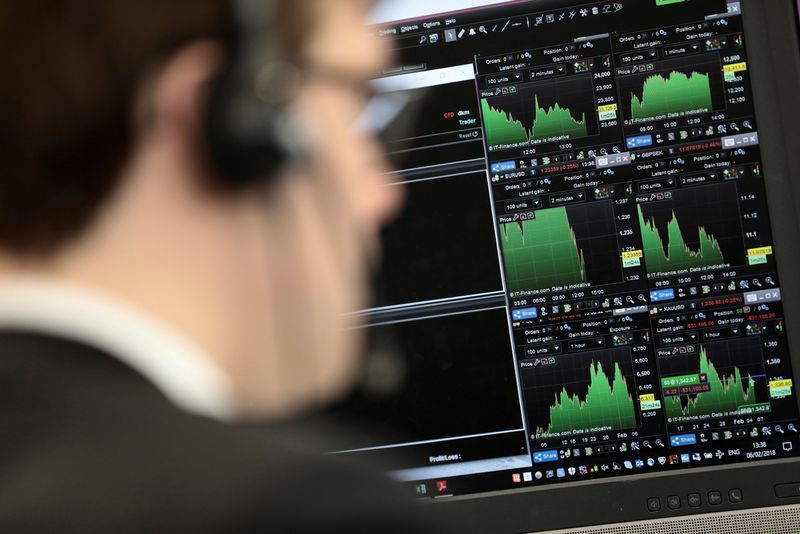Investing.com -- Wall Street is seen trading in a calm manner Monday ahead of the release of the widely-anticipated monthly US consumer inflation number. Chinese inflation data points to slowing consumer spending, while the European Central Bank holds its latest policy-setting meeting this week.
1. US CPI to confirm December rate cut?
The US Federal Reserve is widely expected to cut interest rates next week, as the November nonfarm payrolls report showed underlying weakness in the labor market, even as jobs growth rebounded from an October reading that was depressed due to strikes and hurricanes.
Financial markets currently see a over 80% chance of a 25 basis points rate cut at the US central bank's Dec. 17-18 policy meeting.
The one data point that could seriously upset this thinking is the November consumer price inflation release, due on Wednesday, amid signs Inflation has started ticking up lately.
The Fed’s preferred inflation measure, the core PCE index moved up to 2.8% in October, while President-elect Donald Trump's plans to raise tariffs on imports have also raised inflationary concerns.
It also looks likely that Jerome Powell will continue to drive the US central bank’s policy thinking, after Trump said in an interview aired on Sunday he will not try to replace the Federal Reserve Chair Jerome Powell upon taking office in January.
"No, I don't think so. I don't see it," Trump said on NBC News' “Meet the Press with Kristen Welker" when asked if he would seek to remove Powell, whose term ends in 2026.
Trump named Powell to the Fed chair in early 2018 to replace Janet Yellen, but the relationship quickly soured, with Trump frequently attacking the Fed and its chief during his first term in office.
2. Futures muted at start of week
US stock futures have started the new week in a relatively muted fashion, as investors await the release of key inflation data.
By 03:55 ET (08:55 GMT), the Dow futures contract was down 55 points, or 0.1%, while S&P 500 futures climbed 2 points, or 0.1%, and Nasdaq 100 futures rose by 40 points, or 0.2%.
The S&P 500 and Nasdaq Composite closed at fresh records Friday, rising around 1% and over 3% for the week, respectively. The Dow Jones Industrial Average underperformed, closing the week down 0.6%.
The economic data slate is relatively empty Monday, and all eyes will be on the release of the latest consumer inflation data on Wednesday [see above], as investors seek confirmation that the Fed will cut interest rates next week.
On the corporate side, the quarterly earnings season is gradually drawing to a close, but investors will still be able to study Oracle's (NYSE:ORCL) results after the close.
3. ECB leads this week’s central bank parade
It’s not only the Fed that is expected to cut interest rates in the near future.
The European Central Bank meets on Thursday, its final policy meeting of the year, with economists overwhelmingly expecting another 25-bps rate cut - which would be the fourth such cut this year.
Eurozone inflation ticked higher in November, but still appears to be heading towards the ECB’s 2% target, with some signs that wage pressures are easing.
The ECB is also to publish updated growth and inflation forecasts, which are likely to be revised lower for next year.
Since the ECB’s last meeting in October tariff risks for Europe have risen after Trump’s election win; France and Germany are grappling with political turmoil; business activity has slowed sharply, and the euro has weakened.
Elsewhere, the Bank of Canada could cut this week by the larger 50 bps, while the Swiss National Bank could also ease by 50 bps given how much it has been spending to restrain the Swiss franc.
4. Chinese inflation drop shows economic weakness
Chinese consumer inflation shrank more than expected in November, falling to a five-month low as a swathe of recent stimulus measures did little to offset a stubborn deflationary trend.
November CPI slumped 0.6% month-on-month in November, government data showed on Monday. The reading was softer than expectations for a drop of 0.4% and weakened from the 0.3% contraction seen in the prior month.
CPI grew 0.2% year-on-year, less than expectations of 0.5% and weakening from the 0.3% growth seen in the prior month.
The reading indicated that while some facets of China’s economy had picked up amid aggressive stimulus measures from Beijing, consumer spending remained fragile. This lent more credence to growing investor calls for more targeted, fiscal measures aimed at shoring up private consumption.
China’s leaders on Monday pledged “more proactive” fiscal measures and “moderately” looser monetary policy next year to boost domestic consumption, according to an official readout of a key policy meeting that outlined upcoming economic priorities.
Fitch Ratings revised down its 2025 Chinese GDP growth forecast to 4.3% from 4.5%, earlier Monday. The credit rating agency also adjusted its 2026 growth projections to 4.0%, down from 4.3% in September.
5. Oil rises on Syrian uncertainty
Crude prices rose Monday, as the overthrow of the Bashar al-Assad regime in Syria introduced greater uncertainty to the oil-rich Middle East, although concerns over weakening demand persisted.
By 03:55 ET, the US crude futures (WTI) climbed 1.3% to $68.08 a barrel, while the Brent contract rose 1.1% to $71.90 a barrel.
Syrian rebels announced on state television on Sunday they had ousted President al-Assad, raising fears of a new wave of instability in a region already gripped by war.
However, gains have been tempered by weak Chinese inflation figures [see above] raising more concerns about economic growth in the world's largest crude importer.
Additionally, Saudi Aramco (TADAWUL:2222), the world's biggest crude oil exporter, has reduced its January 2025 prices for Asian buyers to the lowest level since early 2021, it said on Sunday, as it struggles for demand.
